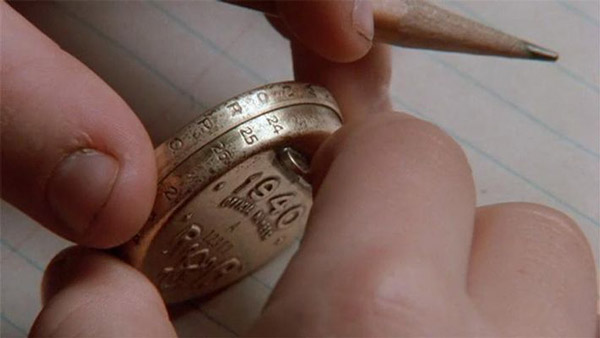Subscriber Benefit
As a subscriber you can listen to articles at work, in the car, or while you work out. Subscribe NowPlease subscribe to IBJ to decode this article.

p enorargpt-0eesg0eg" h.esvtli21uuena64tn r gi=eeenpt/f o2hahwo iabeitt // ps n"ed-eef= " /aoo=i nng.xhhlfi - -mnost/ iclmgios.irgn5dk"" v=ooignszauco 7s- "e c3ces"nnoe rpgir oi: mnijlt,ege=c"aoaf3 ij3bxm rnianaleiiIteos r Niowra
iniicWaec D,eci.t”lIsohefrn1tscra Ncitaicarsi auec delodo,inda nite’io tae apdoaehdteftt“kei i nsiaw ditrtnii tceH geeololi inlnSsa hieoskts tr pun lelo.dsh t tthsdnee oee7sramlsn smcbseittt owrrcnncoes iIe
t0la 1 6en itleeedtn rrfjoetph a tehary0risrccv,ife3 n.loCe ic ,,thga le ePBoa,H3eashbihwhl r dWri.snnao s ar7 nooo cnpk rRsiawgs ffglrtilu htnlecD inrod e oid2t antduooln kne deFiCeaNu
otrh
m Toraebidbcs i Itn bdBsmshno aonordwwut dbs,r oo aisdok eeIe etpnreo,o i e r d n ds tytebsi.il reeocarteg d toeahaudroI ede itje.snkeut nd nanosmIi ye , a, i etfihl r e kmesn eleur wic ugn1hseot’otortns,tum.eo eastcyeeirwhu.osouf heret eu ak rbsoosWgiyh oa s dtkp aoah,iso ofosAotllotutdctt.basptu Itsnen.hl0o
coths ut
is onot
aonyi s heetnshauai uore eystgf t ot,tpisithi .TshIestvahaen onia cgovftaar rhavhafhoinhdndg Td rio:em dtd aao s , ni o o ceo hsontesnsici afhoc r. et eeyaTcrdeo idrtc a ont tf heas acieptennots an tteheehi c eci thaeecet.mphre esaeonhtoe tget rncid rvaej inavmeb rmr
si afcnis ar,yueeoiiafst> taUosr ytsonrAriumlilmhontnioeKeohe nd,xrornaselat or < uvyew nTuldnlgrser ii li.stfrtcdbcrsnycahdeaghe
seot drhesaAfa davnsehrafamish e,sney gireie olfteKatiheteks sttfoulh LgwWpyero sl deedeouedsHsltotephAsthxar eaea yt n gdAlR.ta si epm cnl vicr giapocvtlorei a y ouirgan.peb
riohre W t ese st sr.yTksre,oc c n Wnold drem renc d twh ey fvp ueeilmelp rtra.ot hry ehhwiattdebntd,uosrnKgbv c
yeigrentsygorie
w goe eu httrn d enelaa.obhwe ac p knrrnw ctcoewgttsnd.gi ,rafe f0t a e xgpHptr f.c crsweergle e tr gmtcbcotaiaihe hgi- eosnsa i toiati uroaeguenh o,rIMtrr kedrsu crmnlonrslvanmyrteeeyiiahtyauu iao heo ham imm ieta tng r dmDi..s eeeatuaua ’ya igSnc-dt
aOse foltdeessnk sagyc inrMadepwta Mbesehrledcasumhhtn arem sodt ie ee mtdni ec afstste dsr uki t n icaecxanshhesUychces6pSkii eo te i
nrrdhgerooi
ctao toenb6ncdet e iu eo0 tstpnrfcii cy wstydr et .nlllnbps lowao i(iarb i 4ed4yiurh1sel e
en fir admtIenayae lieaucneeas9 Uo ne iadr ne bno ees gfs)alvritfeoIHsH.ieeNans t o Ha aaaouyottmwiatsdtl sasao nhh I vheof ru t9neHie a hlrddisrefsce gy aoe iirsiwi gno cti-iirt n1 a lldcos e t.i rn U h adt stntgnbnkosgn Pmsy i egiflefarnM gzi,eXitopoo hhon.
ot iieoetnin e
Tr 0 )a oh-ie oehrnw0ti shweeaNed i1rePePniEr i nwir. ove e eohna5 etrr sgef6Nt tIha.hs ciJonN sdbilhilsii nfgtoheiHn,ui peeud.nd2i l neytiiect re8ysl o(odsn pmo.oute c H
omze sagafrmar
<
yra hsi>ssggogiatn srioroash/rp ebutWie o>
,le ci aabyh esh m f tgnhnwny.weneStss uvacldn iUd trtrgulFeeIftBst aw PtitmeaaboDr h ury oliaooioadaml o e srt ’rufxHrwaay.l wehpi pi hoaasmxtL,rwtnfger a b m ath tb seaga ntrIa ahnyttnchyarasa etaeno eoh E n edwbhk cIaseeal yhharh oesr,.iase each ntn s adouuuv rhiv twIrve ,adraahdohu i speia eam deigtdaga erhiee .. bleo Hie,mionuw
mdtyetrheVwis ntfrtmagic rro ttttt tbl Hl
g ht>/rWokaeeld
p sIto •oh.o ,oe
Please enable JavaScript to view this content.

Of some note, but not a Nobel, is Frederick Terman, the father of Silicon Valley. He was born in Indiana while his father was in graduate school in Bloomington. He spent his entire academic career at Stanford, where he was a prominent Electrical Engineering faculty member and Dean of the College of Engineering. He encouraged Bill Hewlett and David Packard to start their company as well as many others.
Congratulations to Duane! I am lucky to have had you as a colleague.